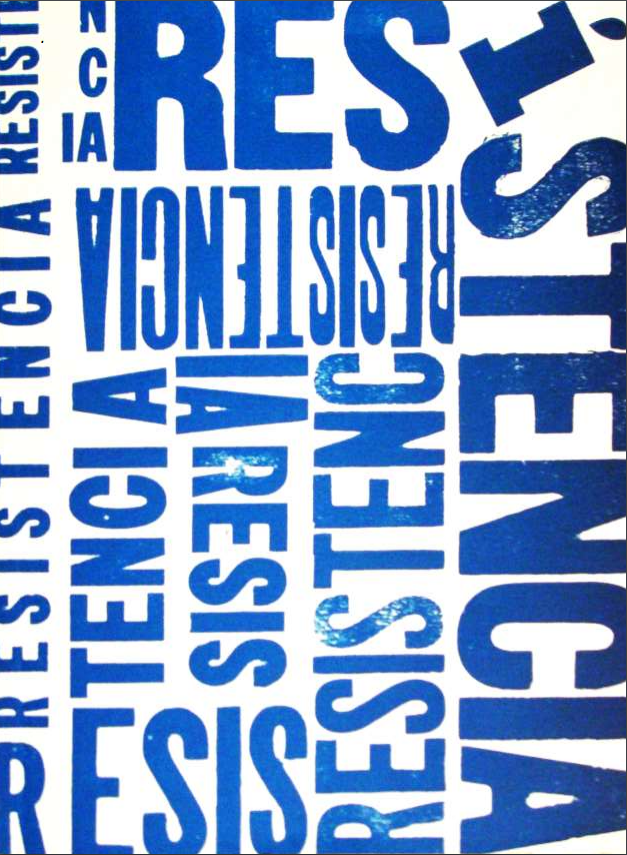Resistance
22/Jan/04 — 24/Jan/04, Teatro de los Insurgentes
Director: Issa Ma. Benítez Dueñas
The III SITAC focuses on the concept of RESISTENCIA as the topic of debate and reflection. It is indeed an ambigous term that nevertheless merits revion given recent cultural and political events. These, in addition to weakening Western democratic ideals, have shown the scant incidence the opinion of the commmon person has in his own social environment. The great democracies of today suffer from a kind of schizophrenia in which action and discourse are more dislocated tan ever. This leads to a series of contradictions and major disproportions in control discourses and methods emplayed by those in power. It is also worth noting that perhaps for the first time in history this situation is not limited to so-called developing nations. Instead, it also affects some of the most advanced societies on the globe.
Facing this situation makes the need for a critical and contentious cultural project not only desirable but also indispensable. Nevertheless it seems that a large part of artistic strategies that have been initiated in this vein have turned out to be insufficient or else they have been easily integrated within the system that they seem to question. It is in the context of this contradiction that the Third SITAC attempts to delve into the possibility of a new form of social, cultural and artistic activism, one that perhaps offers some prospect of efficacy on a smaller scale and in more immediate contexts. We want to restate not only the need, but also the very possibility of resistance, of confrontation, of negotiation, of looking for alternatives and if all else fails, of the prerogative that all of us have to say NO...
Program
1. Resistance as possibility
The first discussion panel focuses attention on those spheres in which resistance may be an underlying structure for discourse and actions It attempts to establish reasons for which resistance is necessary from political perspective - nderstood in the sense of social action- and from different cultural viewpoints as well. This first approach to the subject seeks to detect social dynamics of negotiation that serve as the basis for further discussion, while at the same time evaluating the ways and terms under which some dynamics of resistance of recent years have been integrated into institutional and media discourse. A highly important aspect of this first block is related to the need to understand resistance, no longer exclusively as a vertical dynamic -that is, ideological- but rather also as a series of practices that develop horizontally within concrete social spheres.
Coordinator: Cuauhtémoc Medina
2. Spaces and Strategies of Resistance
Speaking of resistance implies talking about concrete actions. It is difficult to view this concept in purely abstract terms, isolating it from the wide range of specific examples in which day to day power structures are negotiated within contexts in which we operate. There is no doubt that the system has a great capacity to adapt so that the spaces of resistance exist as sporadic, fragile bubbles in constant tension, in a blurry territory between marginality and institutionalization. In this sense, we seek to critically evaluate the contributions of different groups and individuals that have attempted to carry out their proposals and initiatives from the stance of resistance. The majority of them encounter difficulties in going beyond purely formal aspects so that their assimilation within institutional structures turns out to be surprisingly swift and effective. Some other cases, certainly fewer, take advantage of this inclusion to undermine the institution from within with different that lead various interesting situations. Finally, there are those initiatives that, whether by their own volition or whether because the institution has not succeeded or is not interested in deciphering the codes of their strategies, manage to remain at the margins with the question, "how much longer?" hanging in the air.
Coordinator: Tobias Ostrander
3. Resistance and seduction: the Mexican case
Regarding its artistic production, Mexico is today one of the most visible countries in the contemporary art world. This does not mean though that the practices that this hype exploits represent comprehensively the complex artistic reality of the country. Nevertheless and given their imminent presence in international circuits, it is worth asking what is the relationship they establish with a particular tradition of resistance linked mainly to generational confrontation and the denial of tradition? In this sense a good part of twentieth century art in Mexico has been raised in combative terms within the strictly artistic sphere while appearing surprisingly docile in the face of its instrumentalization and political legitimation. The eyes of the world of international art focus their interest on an art that is supposed to be the product of survival in the Megalopolis. This biased view of the Mexican art scene has functioned as a powerful vehicle for dissemination and promotion. This situation is paradigmatic within the framework of the operation of the art system within our borders, but also in the international arena willing to absorb a set of practices through strategies that evoke the ghosts of colonialism. Hence the need to raise the debate on the concept of resistance in its multiple relationships with art in Mexico and from different experiences in order to clarify the budgets that are perpetuated outside, while at the same time assuming the need for serious self-criticism inside.
Coordinator: Olivier Debroise



